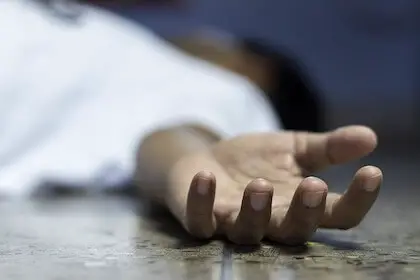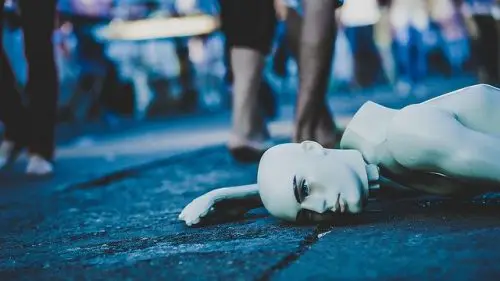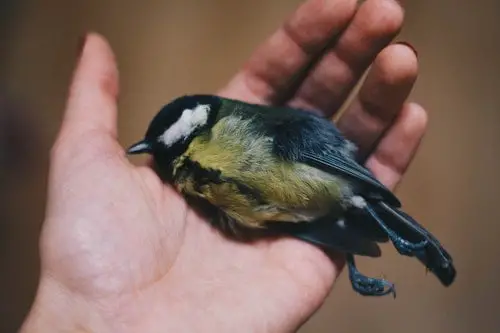Death is the permanent cessation of life and all associated functions(processes) that preserve a living organism. You may be wondering how long the body stays warm after death. For this reason, I have made some research and come up with interesting facts to quench your curiosity.
Death is usually explained in various ways which include: the absence of pulse(no heartbeat), the absence of breathing, the absence of pupillary reaction in response to light (fixed and dilated pupils), flaccid tongue, absence of corneal and pharyngeal reflexes.
To fully explain the changes that occur after death, we cannot make use of cold-blooded animals to explain these changes because Cold-blooded(poikilothermic)animals cannot regulate their internal temperature.
The temperature of their body consistently changes with respect to the temperature of the external environment. Cold-blooded animals include; fishes, amphibians, reptiles, and all other invertebrates in Kingdom Animalia except birds and mammals which are warm-blooded.

Warm-blooded animals on the other hand maintain a constant internal temperature through thermoregulatory processes. Their body temperature is relatively independent of the external temperature.
That is to say that the body of a cold-blooded animal at death is greatly determined by the temperature of its external environment. That of a warm-blooded animal is relatively independent of the external temperature and as such is more suitable for the explanation of temperature changes after death.
Changes That Take Place After Death
There are so many changes that take place immediately after death, minutes after, hours after, days after, and weeks after because death is better explained as a process rather than an event. All these changes are step-wise and all lead to total decomposition of the body eventually.
Using human bodies as a point of reference, humans are mammals and are homeothermic(warm-blooded) and at the point of death have a relatively constant temperature independent of surrounding temperature.
After death, various changes begin to occur in color, also known as Pallor Mortis (from green to purple and then finally the body turns black), Algor Mortis (death chill), Rigor Mortis (stiffening of the muscles due to tension), decomposition, the body begins to smell as putrefaction occurs, bloating and so on.
Livor mortis sets in within minutes of death, the body gradually becomes pale. Blood begins to settle to the lower portions of the body as it drains from smaller veins in the skin. Algor Mortis also sets in, the body begins to go cold, its temperature begins to reduce due to its inability to regulate its internal temperature.
Rigor Mortis settles in at 2-6 hours after death and can last for about 24-72 hours, after which the tension dies leaving the muscles limp. It begins with the muscles in the eyelids, jaws, and neck. It spreads through the face and down the chest, abdomen, arms, and legs, and eventually reaches the digits (fingers and toes.)
On observing how the body temperature slowly but steadily diminishes after death, we can take cognizance of the processes that help our body maintain temperature which ceases upon death.
The human body has a thermo-regulatory system that helps keep its temperature at a nearly constant level.

Various Processes That Help The Human Body Maintain Its Temperature
- The oxygen we take in is used in respiration which is a biochemical process that involves the breakdown of glucose in the cells to produce chemical energy. The food we eat(having been assimilated) is the breakdown of our cells during respiration to produce energy. Therefore, the food we consume is the source of our body heat.
- In addition, we burn the adipose tissues in our body, and in so doing heat is generated. Various parts of the body make use of this energy during metabolic processes and body heat increases. Thus, we see that the heat produced is due to a high rate of metabolic activities.
Don’t also forget that without the oxygen we breathe, none of these processes would be possible as the heart would no longer be able to pump blood.
On the death of a human being, the above activities will come to an end and the body would begin to grow cold. The hypothalamus, skin, sweat glands, blood vessels, and all other parts of the body that help regulate temperature can no longer function. Also, organs such as the heart, brain, liver, and muscles that generate heat when active is now inactive.
When a person dies, all metabolic processes which regulate temperature would stop slowly. The normal temperature of the body is about 37°C(98.6°F) and this temperature would continue to alter till the final body temperature would be the same as the ambient temperature (temperature of the surroundings where the body lies).
How Long The Body Would Stay Warm After Death Is Dependent On Certain Factors
These factors include; the thickness of body clothing, air current, wind intensity, size of the body, temperature and weather conditions, and also how warm the body was at the point of death, etc.
The Thickness Of Body Clothing
The higher the insulating properties of the clothing worn, the lower the heat loss. Size of the body: Bodies with a higher surface-area-to-volume ratio(thinner bodies) would cool a bit faster than bodies with a lower surface-area-to-volume ratio(fatter bodies).
Air Current
Moving air would dissipate body heat quicker than still air would.
Temperature Conditions
In cold/freezing temperatures(like winter), the body would cool much faster than it would in warmer temperatures.
Weather conditions
In weather conditions like high humidity, a body would lose heat much slower due to the heaviness of the air.
The warmth of the body at death
If the body temperature was high at death, for instance, due to a high fever, the body would take a longer time to cool down than it would take if the temperature was, say at normal.

Also, Newton’s law of cooling states that the rate of heat loss of a body is directly proportional to the difference in the temperatures between the body and its surroundings. That is to say that the larger the temperature difference between an object and its surrounding, the quicker the cooling process.
Generally, if the surrounding temperature is lower than body temperature at death, it would take about 12 hours for the body to become cool to touch and 12 more hours before it would be cool to the core.
This cooling is said to occur somewhat linearly. With respect to the rule of thumb, the body temperature decreases by an average of 1 °C per hour in the first 24 hours until its temperature corresponds to the ambient temperature.
It is very important to note that this postmortem cooling (Algor mortis) is employed in forensic science to estimate the time of death, and as such can be used as valid data to aid investigation in cases involving death.
Glossary
- Science ABC [Link]




